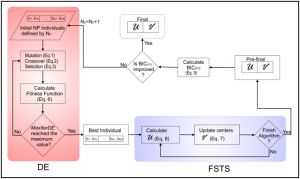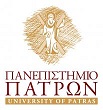Publication
Konstantina Dimitrakopoulou1*, Aristidis G. Vrahatis2*, Esther Wilk3, Athanasios K. Tsakalidis2 and Anastasios Bezerianos1,4, OLYMPUS: An automated hybrid clustering method in time series gene expression. Case study: Host response after Influenza A (H1N1) infection, Computer Methods and Programs in Biomedicine, ISSN 0169-2607
1School of Medicine, University of Patras, Patras 265 00, Greece
2Department of Computer Engineering and Informatics, University of Patras, Patras 265 00, Greece
3Department of Infection Genetics, Helmholtz Centre for Infection Research and University of Veterinary Medicine Hannover, 38124 Braunschweig, Germany
4SINAPSE Institute, Center of Life Sciences, National University of Singapore, Singapore 117456
*The authors wish it to be known that, in their opinion, the first two authors should be regarded as joint First Authors.
Abstract of OLYMPUS
In this paper, we propose an automated hybrid clustering method, named OLYMPUS, in the field of time series gene expression analysis. This work was inspired by the emerging needs posed in the recent time series microarray experimental design. The ‘OLYMPUS’ clustering tool, integrates Fuzzy Short Time Series (FSTS) algorithm and Differential Evolutionary (DE) algorithm along with a similarity metric tailored for this kind of time series experiments. The FSTS method revised the standard fuzzy c-means method by incorporating the Short Time Series (STS) distance, a metric that manages to find the differences in the shapes, as defined by the relative change of expression and the corresponding temporal information, regardless of the difference in absolute values. Also, FSTS confirms the widely accepted idea that genes have a broad functionality repertoire and therefore, can/should belong to more than one group. On the other side, DE is a successful meta-heuristic method in providing fast and near-optimal solutions. Finally, we embedded Bayesian Information Criterion (BIC) into our algorithmic scheme in an attempt to determine the optimal cluster number. The proposed algorithm, OLYMPUS, displayed significant improvement in terms of accuracy and of detecting the optimal cluster number when compared to a variety of related algorithms.
FLOWCHART OF OLYMPUS
SOFTWARE

 BMBS
BMBS J. Hopkins University
J. Hopkins University Nat. Univ. Singapore
Nat. Univ. Singapore School of Medicine
School of Medicine Sinapse Institute
Sinapse Institute Summer School 2010
Summer School 2010 SYSGENET
SYSGENET University of Patras
University of Patras